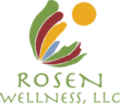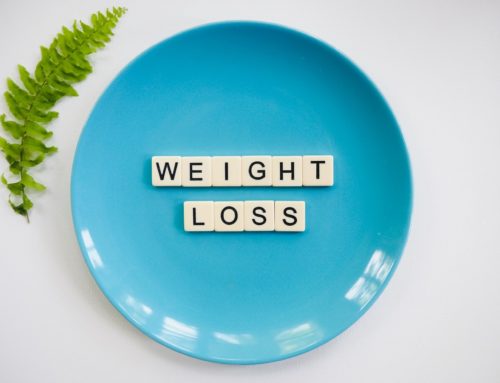You may be familiar with the old saying that the way to a man’s heart is through his stomach. Here is another truism – the key to a man’s health and his enjoyment of life, particularly as he ages, is his prostate.
The prostate is a small walnut-sized gland located under the bladder and surrounds the urethra. The urethra transports urine from the bladder and ejaculates semen. The prostate acts as a valve that permits both sperm and urine to flow out of the body. It receives sperm from the testicles and produces nutrients to nourish the sperm.
The prostate functions as a filter. It ensures that the seminal fluid is a healthy environment for sperm cells by filtering out impurities from the blood stream. Healthy sperm increase the likelihood of a healthy baby!
There are three main prostate disorders – prostatitis, benign prostatic hyperplasia (BPH), and prostate cancer. By the age of fifty, 75% of men have enlarged prostates and 33% have cancer cells in their prostate. By the age of seventy-five, 75% have cancer cells in their prostates.
Prostatitis is pain from the swelling of the prostate gland. The Merck Manual says, “Prostatitis usually develops for unknown reasons.” It can result from a bacterial infection, yet most times it is non-bacterial.
Benign prostatic hyperplasia (BPH) is a noncancerous enlargement of the prostate gland that makes urination difficult. Again, the Merck Manual does not offer much help, “Benign prostatic hyperplasia (BPH) becomes increasingly common as men age, especially after age 50. The precise cause is not known but probably involves changes induced by hormones, especially testosterone.” By age fifty 30% of men begin to experience BPH. By age sixty it is 50%, beyond age 70 it is 80%, and by age 80 it is practically 100%. In addition, 20% of men with BPH will develop prostate cancer.
Testosterone controls the growth and functioning of the prostate. As men age, they produce less testosterone. At the same time there may be an increase in the hormone dihydrotestosterone (DHT). DHT is made from testosterone and makes the prostate grow. Its production is stimulated by estradiol (a form of estrogen). Men with BPH have been found to have excessive estradiol in their prostate. The excess estrogen comes from fat cells where it is naturally produced. The overweight man may have excess estrogen. Estrogen can also come from food (soy), water, and other environmental sources.
Prostate cancer is the most common cancer among men. Often, it grows very slowly and may take decades to produce symptoms. Sometimes it grows rapidly and spreads outside the prostate. According to the Merck Manual, “The cause of prostate cancer is not known.”
So, what do we know? Medicine (as represented by the Merck Manual) does not know what causes any of these disorders affecting the majority of males in their lifetime. The common symptoms indicate the likelihood of the same disease pathway: pain in the penis, testicles, and perineum; frequent, burning, and/or night-time urination; incomplete emptying of the bladder; painful ejaculation; painful urination; sensation of having to urinate immediately often accompanied by bladder pain or spasm; and recurring urinary tract infections. There are also some seemingly unrelated symptoms – lower back pain (very common), chronic pelvic pain syndrome, fever, chills, joint pain, muscle pain, and infection in the blood stream.
Perhaps there is a cause – our modern lifestyle and specifically four main factors. First, many men are sedentary with limited exercise. This leads to a lack of blood flow and circulation throughout the body, allowing toxins to accumulate, and providing less nourishment through the body.
Second, many of our diets do not include all the nutrients required to nourish our body. Nutrient deficiencies, particularly in the prostate gland create favorable conditions for bacteria to grow and infections to develop.
Third, the emphasis on constant sexual performance depletes nutrients from our bodies through excessive ejaculation. Each ejaculation requires the production of more sperm, which depletes nutrients that could be utilized elsewhere in the body. Increased sexual activity depletes the prostate gland of enzymes and zinc that sterilize the urethra and protect the gland from bacteria and infection.
Fourth, emotional factors such as stress, anxiety, and worry add toxins to the blood. So, what is the impact of all these toxins in the blood? Remember, one of the main functions of the prostate gland is to filter the toxins and metabolic wastes. However, it does not only filter, it also stores.
The accumulation of toxins and wastes over time is likely why the prevalence increases with age. What is this “non-bacterial” prostatitis described earlier? This is caused by bacteria trapped inside the small sacs (called acini) that make up the interior of the prostate gland. When the fluid inside these sacs is stagnant or unhealthy, bacteria will grow. The sacs become inflamed and swell and then seal off. As they do this the prostate swells. These bacteria do not get outside of the sacs, so it can not be identified in the urine or semen.
Prostate problems come from four factors – genetic, hormonal, dietary, and lifestyle. The good news – we can influence three of them. We can change our diet, there are nutritional supplements that can support the prostate, we can increase our exercise, we can reduce our stress, and we can regulate our sexual frequency.
A diet primarily of bad fats, high in sugar and refined and processed foods, minimal fruits and vegetables will lead to nutrient deficiencies. There are several nutrients key for a healthy prostate.
Zinc is the most important nutrient for the prostate. It is a trace mineral that is involved in male hormone production, seminal fluid production, and sperm production. It also prevents the formation of DHT. A normal prostate gland contains more zinc that any other organ in the body. Our ability to absorb zinc declines with age. Zinc deficiency is very common today. The best sources of zinc include eggs, meat, organ meats, seafood (especially oysters), and seeds (particularly pumpkin).
Vitamin B6 (and all the B vitamins) plays an important role in hormonal metabolism. It reduces the conversion of testosterone into DHT (DHT makes the prostate grow). We get B vitamins from whole grains and healthy animal products.
Vitamins C, E, and the mineral selenium are antioxidants which neutralize the excess free radicals that are creating havoc throughout the body. Antioxidants come from fruits and vegetables.
The essential fatty acids (Omega 3’s – EPA and DHA) are anti-inflammatory and help to build and maintain healthy cells. Omega 3’s come mainly from cold water fish.
The wo herbs have been found to support the prostate gland – saw palmetto and pygeum. Saw palmetto blocks the formation of DHT. Pygeum is an anti-inflammatory.
Exercise is beneficial because it increases blood flow and nerve energy to the surrounding tissues and to the prostate itself. Other helpful ideas for enlarged prostates include Sitz baths (for 30 minutes minimum) and massage. Massage will help with blood flow. There are some specific massage techniques that can help to clean the prostate and reduce swelling. For more information on those techniques speak with a qualified professional.
Bernard Rosen, PhD is a Nutrition Consultant and Educator. He works with individuals, groups, and at corporations to create individualized nutrition and wellness programs. His office is in Coeur d’Alene. To learn more or to schedule an appointment, call (208) 771-6570 or go to www.brwellness.com.







